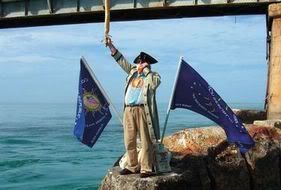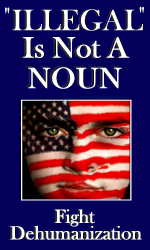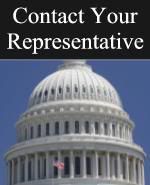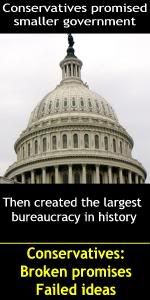Conch Republic "forces" seize Florida bridge
 In a bit of “theater of the absurd” that could only be accomplished by the colorfully off-beat residents of the Florida Keys, the government of the faux “Conch Republic” has laid claim to the remnants of the Old Seven Mile Bridge that has been at the center of a recent immigration controversy.
In a bit of “theater of the absurd” that could only be accomplished by the colorfully off-beat residents of the Florida Keys, the government of the faux “Conch Republic” has laid claim to the remnants of the Old Seven Mile Bridge that has been at the center of a recent immigration controversy.
The controversy revolves around the deportation of 15 Cuban refugees who landed at the bridge, only to find that the government did not believe it met the requirements necessary to be considered US “land” under the “wet foot-dry foot” policy. According to current rules, Cuban refugee who manages to reach dry land in the United States are usually allowed to remain in the country, while those caught at sea are sent back.
The dilapidated, old bridge, which runs parallel to its current replacement, had fallen into disrepair over the years and due to missing spans, no longer is officially considered “connect to land” according to Coast Guard Officials. Since the 15 Cubans had no way to “walk to land” from where they landed they were considered “wet” under current immigration rules.
In an effort to highlight the twisted logic of the decision, the government of the Conch Republic has weighed in:
(more below the fold)
tag: immigration Faux force 'seizes' disconnected span
Key West Citizen
MARATHON — For the second time in its 24-year history, the Conch Republic has claimed a piece of sovereign territory for its very own.
On Friday, heavily supported by cans of caffeine-free Diet Coke, bottled water and loaves of Cuban bread, top officials of the Florida Keys' own whimsical republic planted two flags on a section of the Old Seven Mile Bridge, claiming the structure for the "independent islands of the Florida Keys."
The Conch Republic Navy — two fishing boats — left the 7-Mile Marina in Marathon at 1 p.m. as "I Got You Babe" pulsed from a dockside stereo, and chugged 15 minutes away to a concrete support piling on the Old Seven Mile Bridge, a now-deteriorating span that once was part of Henry Flagler's Overseas Railway.
Posing over the golden glint of sun on ocean, Peter Anderson, the self-proclaimed secretary general of the pretend republic, stood between two flapping flags, blew the official conch shell horn and brandished the sword of state — a loaf of Cuban bread speared on a rapier.
But for all the tongue-in-cheekiness of the event, there also was a political protest underlying the expedition.
Anderson and cohorts planted their Conch Republic flags on the specific piling where 15 Cubans landed after fleeing Matanzas Province in Cuba on the night of Jan. 2. That portion of the bridge is no longer connected to shore, and under U.S. dry foot/wet foot immigration policy, which usually allows refugees to stay in country if they reach dry land, the isolated section of the bridge was deemed "at sea."
As a result, the Cubans were deported Jan. 9, to the outrage of Anderson and his Conch Republic cabinet.
But he reckoned that the bridge, no longer claimed by the federal government, was now open to occupation by the Conch Republic. So the amphibious assault was conceived, and letters were sent to state and federal officials, as well the World Court in The Hague, Netherlands, explaining the republic's intentions
The action is a milestone in Conch Republic history because, according to Anderson, Keys residents have always lived as dual citizens — half-Conch, half-Yankee — since the republic's inception in 1982. Claiming the Old Seven Mile Bridge as its own means the Conch Republic now has territory it shares with no other nation.
Or, as Anderson put it, "This is now our sovereign territory in 20 feet in either direction!"
The Conch Republic was established by mock secession from the United States on April 23, 1982, in response to a U.S. Border Patrol blockade set up on U.S. 1 at Florida City to intercept illegal immigrants and drugs. In effect, the blockade required Keys residents and visitors to prove they were U.S. citizens when they drove onto the mainland.
Dennis Wardlow, mayor of Key West at the time, and other Keys officials sought an injunction at the federal courthouse in Miami to stop the blockade, but failed. The next day, the Keys symbolically seceded from the United States in a ceremony in Mallory Square, ceremoniously breaking a loaf of stale Cuban bread over the head of a man dressed in a U.S. Navy uniform.
After one minute of separation, Wardlow surrendered to the Navy, demanding $1 billion in foreign aid and war relief. The blockade eventually was halted.

Photo by: ADAM KARLIN/The Citizen
Peter Anderson, secretary general of the Conch Republic, raises the sword of stale Cuban bread and blows a conch shell to symbolize the republic's seizure of a portion of the Old Seven Mile Bridge off Marathon Friday. The property was the focus of national news this week when 15 Cuban migrants who landed at the old bridge were returned to Cuba, after federal authorities ruled they had not reached U.S. soil.

































No comments:
Post a Comment